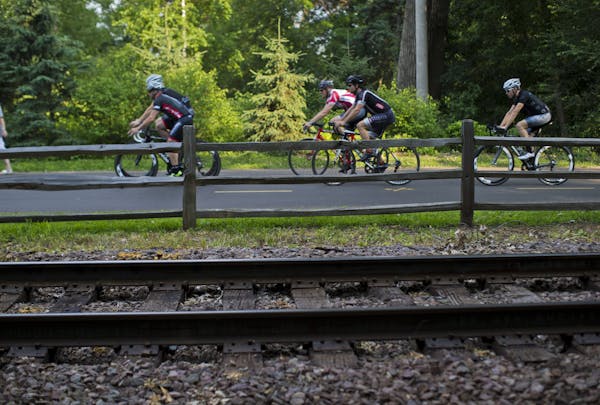Counterpoint
I have learned three things about big complex government projects: 1) They usually take an incredibly long time to plan, fund and build. 2) Engaging the community continuously is key to maintaining momentum and getting it done right. 3) You can't make everyone happy.
The Southwest Light Rail Transit project is big and complicated, as noted in the Star Tribune's editorial ("Rethink options on Southwest light rail," Aug. 4). It runs 15 miles through five cities, impacting diverse urban and suburban neighborhoods. The public cost of more than $1 billion involves local, state and federal sources. And it's really two projects in one — selecting the right route and design for LRT and selecting the right route and design for the existing freight rail.
Southwest LRT has been in various phases of intense planning for more than a decade. The cities along the corridor, Hennepin County, the Met Council, and business and community members have been working together since 2000 to assess the viability of transit in the Southwest metro, to engage the broader community, to select the mode of transit (bus or rail), to evaluate more than 30 alignments (including using the Midtown Greenway and factoring in future streetcars and LRT connections), and to seek funding. Extensive technical analysis as well as extensive public input — including more than 300 neighborhood meetings, open houses and public hearings — led to the recommendation of the Kenilworth corridor as the best route. All the cities, the county and the Met Council approved this route in 2010.
Once Kenilworth was approved for LRT, an equally intensive process began to figure out what to do with the freight rail. It included government, business, residents and the railroad companies. When MnDOT severed the 29th Street freight corridor in the 1990s to reconstruct Hwy. 55, they relocated the freight to the Kenilworth corridor with the approval of Hennepin County. The promise was that Kenilworth would be a temporary location until a polluted site in St. Louis Park could be cleaned up and a freight rail connection built on that site.
More than $10 million in public funding was spent to clean up that polluted site to accommodate the freight rail connection. At the time, the railroad companies said relocating to the St. Louis Park corridor was fine with them, even a preferable route, as long as it provided a safe, economic and efficient connection to St. Paul. The city of St. Louis Park said at the time that if Kenilworth was needed for transit and if co-location of freight and transit in Kenilworth wasn't feasible, they'd accept the freight as long as it was done right. They defined right by developing a list of conditions and mitigation measures.
In 2011, the Federal Transit Administration (FTA) approved the Southwest LRT project, one of only 12 nationally to be given the green light for preliminary engineering. FTA, in its approval, combined the LRT and freight into one project, but did not increase the project budget.
Today there is consensus that Southwest LRT, an extension of the Central Corridor green line, is a critical link in the development of a comprehensive transit system for our region. After years of study, the preferred route has been selected. Environmental assessments continue, making sure impacts are identified and addressed. The cities along the corridor are working to develop vibrant accessible stations with opportunities for new housing and jobs. Initial federal, state and county funding for Southwest LRT has been committed, thanks to a strong partnership with the business community.
But so far no one has been able to resolve the impasse over freight. Minneapolis wants the freight removed, as promised. St. Louis Park doesn't want the additional freight. And I believe that the Twin Cities & Western Railroad is taking advantage of the conflict between the two cities to advance its own business interests. Until all three agree on a freight solution, there's a substantial likelihood that Southwest LRT won't be advancing. That would be a big-time loss for our region.
One other thing I have learned is that the longer it takes to plan these big infrastructure projects, the more it costs to build them. Let's not jump to the conclusion that getting to a freight rail solution requires planning a new Southwest LRT route. We should rethink and revise the freight options on the table and move forward.
I know we love to plan in Minnesota, but now is the time to make a decision.
--------------
Gail Dorfman is a Hennepin County commissioner.
Ukraine aid vote is a domestic and geopolitical inflection point



